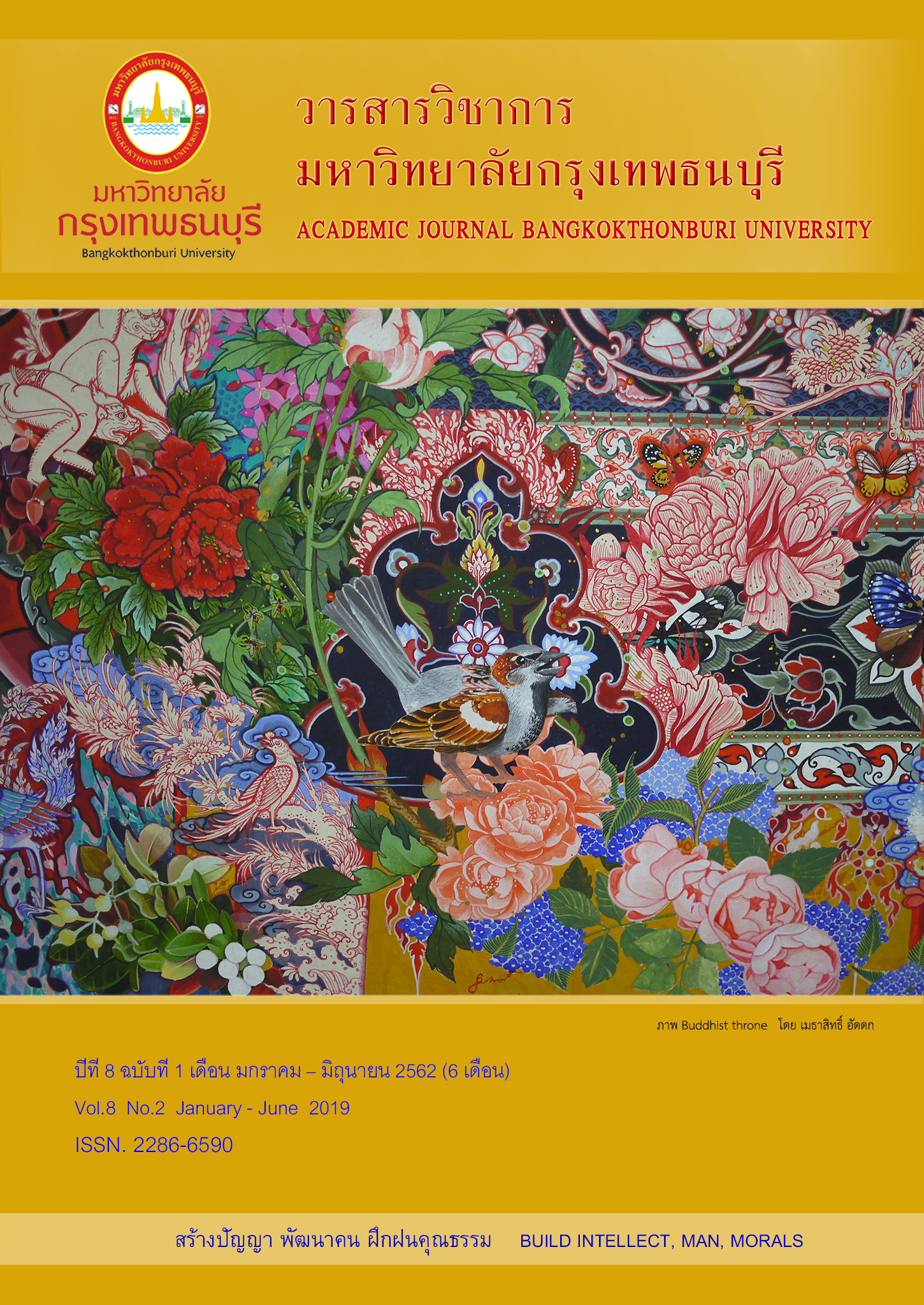A Study of Academic Integrity of Undergraduate Students
Main Article Content
Abstract
ABSTRACT
The purpose of this research was to find out meanings and components of academic integrity of undergraduate students. Mix method of qualitative research and quantitative research were employed. Data collections was performed by 2 groups; 1) Key informants who were administrators, instructors and students from 3 higher education institutes, and 2) quantitative samples, in a total of 644 persons, who were the first, second, third, and forth year undergraduate students in 3 higher education institutes, using a stratified random sampling method. The study design composed of 2 parts; 1) group discussion was used to find out meanings and components of academic integrity, and 2) quantitative study was used to analyze the components of academic integrity of the undergraduate students. A tool for data collection was Academic Integrity Questionnaire with a total reliability coefficient (a) of .89. Confirmatory factor analysis was used to analyze the data.
The research result was the confirmatory factor analysis significantly confirmed that the model of academic integrity is consistent with the empirical data (x2= 62.69, df = 48, p = .07, GFI = .98, AGFI = .97, RMSEA = .02, SRMR = .02) with standardized factor loading between .97-.99. All the elements are statistically significant level of .01 while Construct Reliability is situated between .94-.99. This proves that the models can explain, with standardized factor loading, academic integrity in descending order as follows: social values, moral values and personal attributes.
Article Details
References
Arhin, A. (2009). A pilot study of nursing student’s perceptions of academic dishonesty: A Generation Y perspective. ABNF Journal, 20(1), 17-21
Baetz, Mark ; et al. (2011). Encouraging Active Classroom Discussion of Academic Integrity and Misconduct in Higher Education Business Contexts. Journal of Academic Ethics. (9), 217-234
Barnard, A., Schurink, W., & Beer, M. D. (2008). A Conceptual Framework of Integrity. South African Journal of Industrial Psychology, 34(2), 40-49
Becker, T. E. (1998, January). Integrity in organizations: Beyond honesty and conscientiousness. Academy of Management. The Academy of Management Review, 23(1), 154-160
Chaiyun Sakulsriprasert. (2013). Confirmatory Factor Analysis. Journal of Clinical Psychology, 44(1), 1-16
Cloud, H. (2006). Integrity; The courage to meet the demands of reality. UK: Harper Collins Books.
Dunn, C. P. (2009). Integrity Matters. International Journal of Leadership Studies. 5 (2), 102-125
International Center for Academic Integrity, (ICAI). (2013). Fundamental Values of Academic Integrity. 2nd ed. Retrieved from https://academicintegrity.org/wp-content/uploads/2017/12/Fundamental-Values-2014.pdf
King Prajadhipok’s Institute. (2011). Research and Development for Enhancement for Integrity in Thailand. Retrieved October 5, 2015, from http://kpi.ac.th/media/pdf/M8_269.pdf.
Mastin, D. F., Peska, J., & Lilly, D. R. (2009). Online Academic Integrity. Teaching of Psychology, 36(3), 174-178
Nonis, S., & Swift, C. O. (2001, November/December). An examination of the relationship between academic dishonesty and workplace dishonesty: a multicampus investigation. Journal of Education for Business, 77(2), 69-77
Poonpong Suksawang. (2013). Structural equation modeling. (1st Edition). Bangkok: Watana Phanit Press.
Suthiti Khattiya & Wilailuk Suwajittanon. (2011). Research Design and Statistics. (2nd Edition). Bangkok: Prayunrawong Printing.
Texas Tech University. (2010, June). McCabe Academic Integrity Survey Report. Texas Tech University. Retrieved from http ://www.depts.ttu.edu/provost/qep/docs/McMabe+Academic_integrity_ Report_Cover.pdf
Yut Kraiwan. (2013). Multivariate ststistical analysis for research. 1st Edition. Bangkok: Chulalongkorn University Press.


